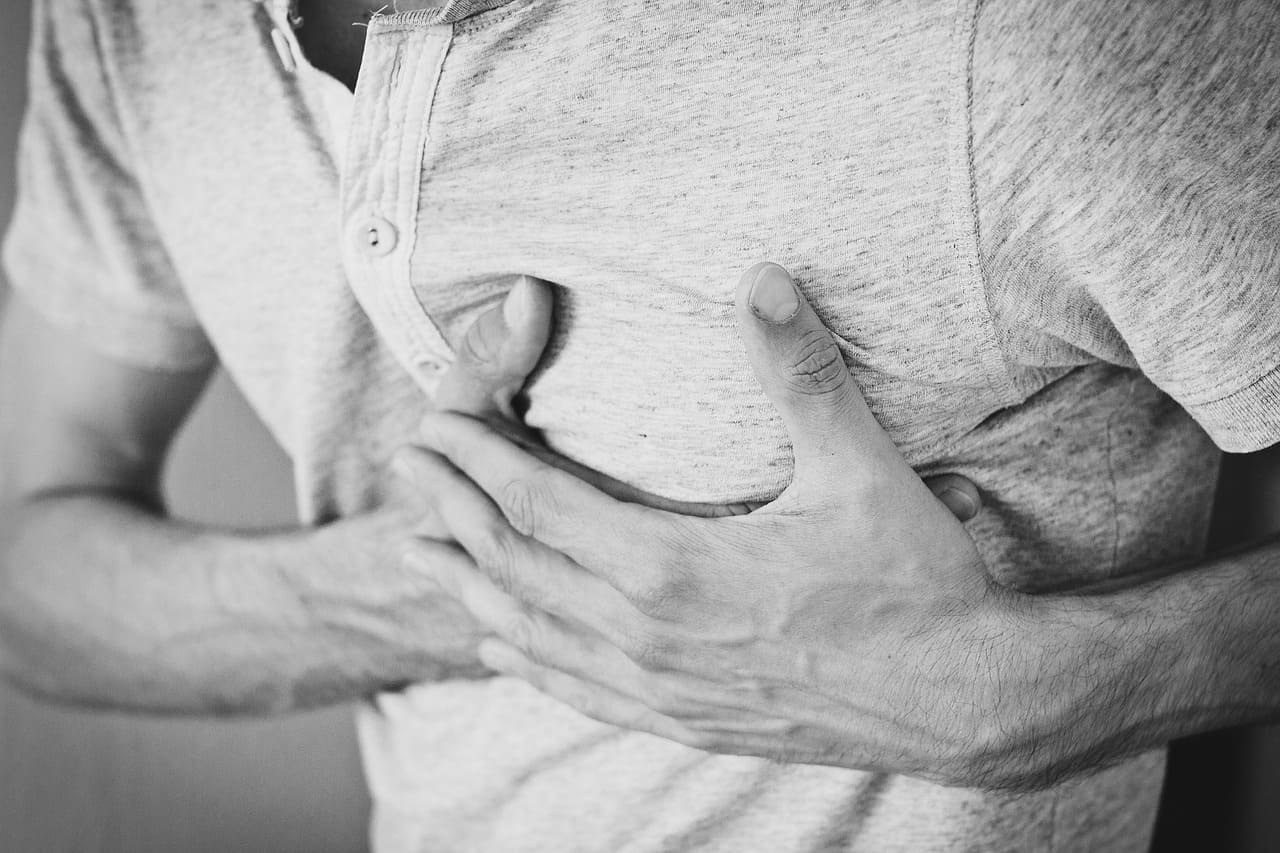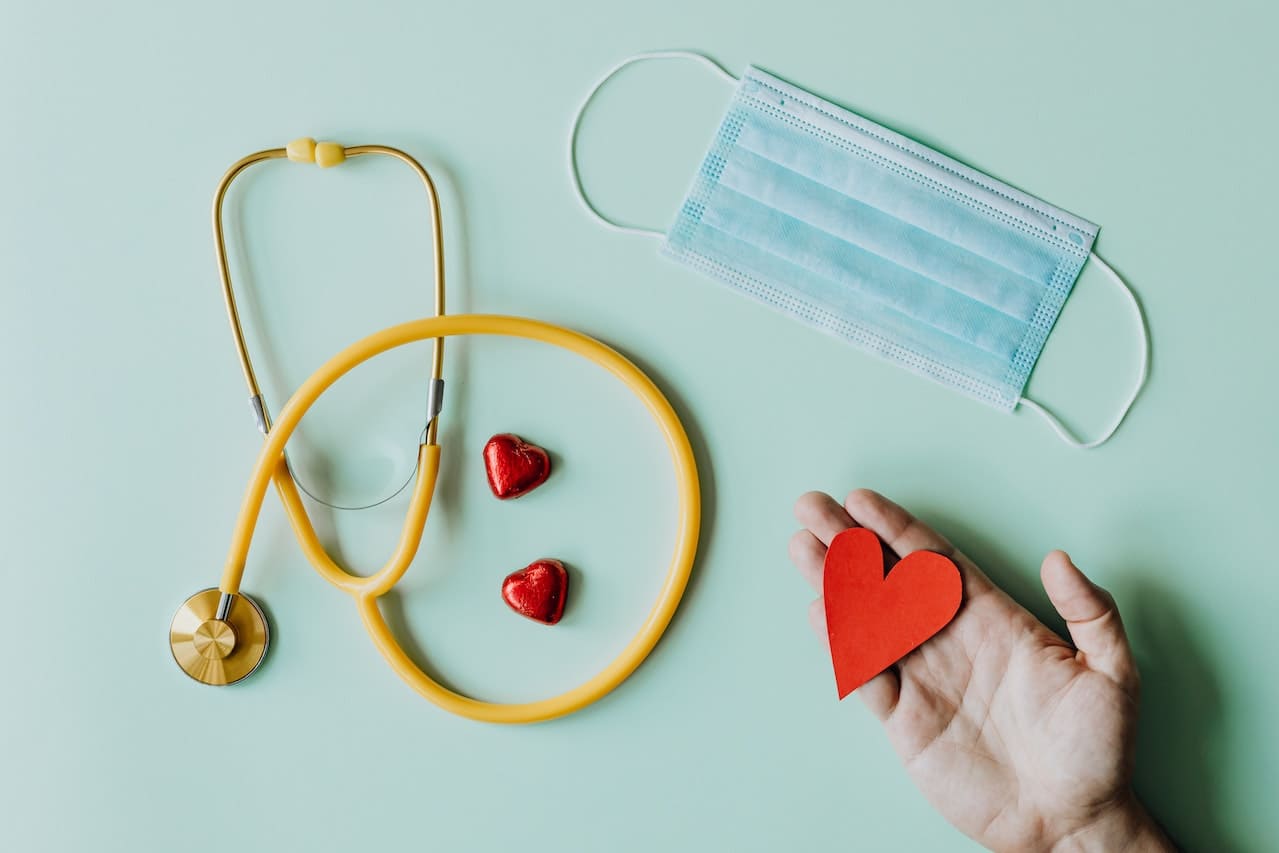Heart disease awareness on Interventional Cardiology Day: What do you need to know?
As we mark the calendar for the upcoming International Day for Interventional Cardiology on the 16th September, it feels like the perfect time to sit down, have a heart-to-heart chat, and unravel the complex world of heart diseases together.

Source: Pexels
Yes, it might sound a bit daunting, but trust us, understanding the details of heart health is not just for medical professionals - it's for everyone who has a heart beating in their chest!
Now, let's talk numbers for a moment. Did you know that heart diseases continue to be a leading cause of death globally? It's a staggering reality, but one that we have the power to change through awareness and education. And that’s precisely why this day holds such significant importance. It beckons us to unite, learn, and take proactive steps to safeguard our heart health.
But here's the silver lining - the fascinating field of interventional cardiology is playing a monumental role in turning the tide against heart diseases.
This dynamic branch of cardiology is all about minimally invasive techniques to diagnose and treat heart conditions, making recovery faster and less painful than traditional surgeries. It's genuinely a beacon of hope and innovation in the medical world.
As we navigate through this enlightening journey together, we’ll delve deep into the various types of heart diseases, their symptoms, and the groundbreaking interventions that are saving lives daily. So, buckle up and get ready for an insightful expedition into the heart of cardiology!
Understanding heart disease types and symptoms
Oh, where do we even begin? The world of heart diseases is indeed vast and sometimes a bit overwhelming, but fear not! We've got this. Let's take it step by step, exploring the most common culprits that affect heart health.
1. Coronary artery disease
Let's take a moment to shine a spotlight on one of the most commonly heard, yet often misunderstood terms in the realm of heart health - Coronary Artery Disease (CAD).
Imagine your heart being a bustling city, and the coronary arteries are the main highways facilitating the seamless flow of traffic, or in this case, the life-sustaining blood. Now, CAD is like a roadblock that obstructs this smooth traffic, causing a series of troubles for the bustling city, our heart.
But what exactly causes these roadblocks? It primarily boils down to the buildup of cholesterol and fatty deposits, known as plaque, in the arteries. This sneaky buildup, which usually progresses over years, narrows the arteries and reduces the blood flow to the heart, causing what we often hear as "chest pain" or angina. In severe cases, it can even lead to heart attacks. Scary, isn't it?
While this might sound a bit grim, understanding the early signs can be your golden ticket to keeping CAD at bay. You might experience symptoms like shortness of breath or extreme fatigue with physical activity, something we often tend to ignore. Keeping a vigilant eye on these can be a lifesaver, literally!
Now, don't you worry! Managing CAD isn't a hard task. It's about embracing a heart-healthy lifestyle, sprinkled with regular exercise and a balanced diet. And guess what? Quitting smoking and limiting alcohol can be your best friends in this journey. It's about making small yet consistent efforts!

Source: Pixabay
2. Heart attacks
Next stop, heart attacks, a term we all are unfortunately too familiar with. This serious condition, medically known as myocardial infarction, occurs when blood flow to a part of the heart is blocked, usually by a blood clot, leading to significant damage to the heart muscle.
First, let's tackle the foremost indicators of a heart attack. The onset is often marked by a sudden, intense chest pain that might feel like a persistent pressure or a squeezing sensation in the centre of the chest. It's essential to note that this pain can radiate outwards, affecting the shoulders, arms, back, neck, or jaw.
Accompanying symptoms can include shortness of breath, cold sweats, nausea, or lightheadedness. These symptoms serve as urgent warnings, signalling the immediate need for medical attention.
Understanding the underlying causes can equip us with the knowledge to mitigate risks. The primary culprits are usually coronary artery disease, which we discussed earlier, and other factors such as obesity, smoking, high blood pressure, and a sedentary lifestyle.
However, there is a glimmer of hope amidst the gravity of this topic. Prompt medical intervention can save lives and prevent further damage to the heart muscle.
Advances in medical science, particularly in the realm of interventional cardiology, have introduced highly effective treatments such as angioplasty and stent placement, significantly improving survival rates and recovery outcomes.
Moreover, adopting preventative measures, such as a heart-healthy diet, regular exercise, and regular medical screenings, can play a decisive role in preventing the occurrence of heart attacks.
3. Arrhythmias
In the simplest terms, arrhythmias refer to irregularities in the heartbeat's rhythm, a condition where the heart may beat too fast, too slow, or with an irregular pattern.
At the core of our heart's function is a fascinating electrical system, orchestrating rhythmic beats that pump blood throughout our body. However, sometimes this electrical symphony might experience a few hiccups, giving rise to arrhythmias. These deviations can range from being harmless quirks to serious issues warranting immediate medical attention.
Now, how do we recognize when the heart is not beating as it should? The symptoms can vary extensively. Some individuals might experience a fluttering in the chest, while others could notice a racing heartbeat or even a slow heartbeat. Additional symptoms can include dizziness, light-headedness, fainting (or near-fainting), and shortness of breath.
When it comes to managing arrhythmias, knowledge truly is power. Early detection and appropriate medical intervention can prevent potential complications. Treatment strategies might encompass lifestyle changes, medications, or even medical procedures like cardiac ablation to rectify the irregular rhythms.
And here's where your role, as well-informed individuals, becomes pivotal. By understanding the nuances of arrhythmias, you can better appreciate the importance of regular screenings and perhaps even aid in fostering awareness, thus contributing to a heart-healthy community.
4. Heart valve disease
This condition is characterised by damage or defects in one of the four heart valves: the mitral, aortic, tricuspid, or pulmonary. A healthy heart valve ensures a unidirectional flow of blood through the heart.
However, when a valve doesn't function properly, it can interfere with the heart's ability to circulate blood efficiently, having a cascading effect on overall health.
Understanding the symptoms of heart valve disease can potentially be a lifesaver. Common signs include breathlessness, palpitations (which feel like a fluttering in the chest), chest pain, and fatigue. It might also manifest as swollen ankles and feet, an outcome of fluid retention as the heart struggles to maintain a steady flow of blood.
These symptoms can sometimes be subtle, gradually intensifying over time, which necessitates keen awareness and timely medical consultations.
In the realm of diagnosis and treatment, advancements in medical science have paved the way for highly effective interventions. Diagnostic procedures such as echocardiograms provide detailed imagery of the heart's functioning, helping physicians to pinpoint the exact nature of the valve issue.
Treatment can range from medications to manage symptoms to surgical interventions for severe cases, including valve repair or replacement.
5. Congenital heart disease
This term encapsulates a variety of structural defects in the heart present at birth. These abnormalities occur during the fetal development stage and can affect the heart's walls, the valves, and the arteries and veins near the heart.
The exact cause remains somewhat elusive, intertwining both genetic and environmental factors. Certain genetic conditions, maternal viral infections, or the consumption of alcohol or drugs during pregnancy can influence the onset of congenital heart defects.
Navigating the symptoms can sometimes be a challenging affair, as they vary greatly among individuals. In newborns, signs might include a bluish tint to the skin, lips, and fingernails, known medically as cyanosis, indicating reduced oxygen in the blood.
Rapid breathing, fatigue, and poor blood circulation are other indicative markers. In some cases, the symptoms might not manifest until adulthood, showcasing as shortness of breath during physical activities or abnormal heart rhythms, among other signs.
Treatments can range from medications to manage symptoms to surgical procedures aimed at correcting the defects.
6. Cardiomyopathy
This condition, characterised by the thickening or stiffening of the heart muscles, plays a pivotal role in our cardiac narrative. Cardiomyopathy can be perceived as a group of disorders affecting the heart muscle, influencing its size, shape, and its ability to pump blood to the rest of the body effectively.
Cardiomyopathy has various types, the most common forms include hypertrophic cardiomyopathy, often a genetic disorder that leads to abnormal thickening of the heart muscle, primarily affecting the ventricles.
Then we have dilated cardiomyopathy, where the ventricles enlarge and weaken, hindering the heart's pumping ability.
Lastly, restrictive cardiomyopathy is characterised by the stiffening of the ventricles, making the heart less capable of filling with blood during the resting phase between beats.
Recognizing the signs of cardiomyopathy is an instrumental part of proactive healthcare management. While some individuals may not exhibit over symptoms, others might experience breathlessness, fatigue, swelling of the legs and ankles, and palpitations. As the condition progresses, it might lead to more severe manifestations, including heart failure.
Depending upon the type and severity of the condition, a healthcare provider might suggest medications, lifestyle modifications, or possibly surgical interventions to manage the symptoms and halt progression. A well-rounded approach might encompass a synergy of these strategies, emphasising the individual's unique health narrative.

Source: Pexels
Interventional cardiology: A closer look
I’m sure you're curious to know exactly what interventional cardiology entails. Interventional cardiology is a prominent branch within the cardiology field that specialises in the utilisation of catheters to diagnose and treat heart diseases.
These minimally invasive procedures significantly reduce recovery time and potential complications when compared to traditional surgeries. These approaches are pivotal in contemporary cardiac care, offering patients a higher quality of life and better prognosis.
The genesis of interventional cardiology can be traced back to the 1970s when Dr. Andreas Gruentzig pioneered the angioplasty technique. This innovative method transformed cardiac care, marking the beginning of a new era where less invasive yet highly effective treatments became the gold standard.
The intervening decades have witnessed remarkable advancements, with continuous research fostering innovation and improving patient outcomes.
Key procedures and techniques
1. Angioplasty
Angioplasty is a procedure involving the dilation of narrowed or obstructed arteries or veins, facilitating improved blood flow to the heart.
This process is accomplished using a balloon catheter, which is inflated at the site of narrowing, helping to alleviate blockages and restore arterial health.
2. Stent placement
Following an angioplasty, stent placement is often the next step to prevent the recurrence of arterial narrowing.
A stent, a small mesh tube, is placed in the artery to keep it open, promoting uninterrupted blood flow and preventing potential complications such as heart attacks.
3. Catheter ablation
Catheter ablation is a technique specifically developed to manage arrhythmias, irregular heart rhythms that can hinder the heart's efficiency.
Through this procedure, specific areas of the heart muscle causing the irregular rhythms are identified and neutralised, restoring normal heart function and rhythm.
4. Heart valve repair/replacement
Heart valve repair and replacement procedures are critical interventions for individuals with valve diseases. These procedures aim to restore the proper function of the heart valves, ensuring efficient blood flow throughout the heart and the rest of the body.
Depending on the severity of the condition, valves may either be repaired to optimise function or replaced with prosthetic valves to ensure effective operation.

Source: Pexels
Prevention and management
You know, they say prevention is better than cure, and when it comes to heart health, this saying holds a treasure trove of wisdom. So, let’s venture into some lifestyle changes that can be your heart's best friend.
1. Diet
Let's kick things off with the powerhouse of well-being - our diet. Imagine treating your body like a temple, where only the choicest of offerings are allowed.
A balanced diet rich in vibrant veggies, whole grains, and lean proteins can be your heart's protective shield. And don't forget, a little treat now and then is perfectly okay; after all, what's life without a sprinkle of sweetness?
2. Exercise
Next up, let's get moving, literally! Exercise is like a love letter to your heart, promising longevity and vitality. Whether it's a brisk walk in the park, a rejuvenating yoga session, or a spirited dance-off to your favourite tunes, find your groove and make a date with exercise daily.
Read also: The best 5 exercises for when you're feeling stressed out
3. Stress management
Now, onto a topic that's often brushed under the carpet - stress management. In this fast-paced world, it's vital to take a step back and breathe. Maybe find a hobby that makes your soul sing, meditate, or simply enjoy a hearty laugh with friends. Remember, a happy heart is a healthy heart!
4. Regular check-ups and screenings
Just like you wouldn't skip a meeting with a dear friend, regular check-ups with your doctor should be a priority. These visits are like friendly catch-ups where you can assess your heart's well-being and nip any potential issues in the bud.
Screenings act as a window to your heart’s health, helping you stay a step ahead and ensuring your ticker remains in prime condition.

Source: Pexels
Getting involved on the International Day for Interventional Cardiology
As the International Day for Interventional Cardiology draws near, you might be pondering how to immerse yourself in the essence of this significant day. Well, fret not, because we've got just the guide for you to celebrate and spread awareness like a pro!
1. Community events and programs
First on our list is diving into the communal spirit through events and programs happening in your locality. Imagine the camaraderie as you engage with like-minded individuals, sharing stories, knowledge, and perhaps, a few heartfelt laughs.
You can look for local healthcare centres or community groups organising events where you can soak in a wealth of information and perhaps even make new friends who share your enthusiasm for heart health.
2. Spreading awareness through social media
In this digital age, what better platform to spread awareness than through the vibrant realms of social media? This Interventional Cardiology Day, let’s paint the digital canvas with information and stories that resonate.
Maybe share an infographic on heart health, a personal story, or even a live session with a healthcare expert. Let's use our platforms to foster a community where knowledge meets compassion, one post at a time.
3. Educational resources for further learning
For those who find joy in diving deeper, this day offers a splendid opportunity to indulge in some insightful learning. Be it a webinar, a workshop, or an engaging podcast, seize the day to expand your understanding of interventional cardiology.
It's a chance to broaden your horizons, and who knows, you might find yourself being a beacon of knowledge and inspiration for others.
Conclusion
Wow, what a journey we've had, right? We've wandered through the world of interventional cardiology together, picking up bits and pieces of new knowledge and insights. It's kind of like assembling a puzzle, with each piece adding more depth and detail to the big picture.
This special field of medicine is more than just doctors and hospitals; it's a shining light that shows us how smart thinking and new technology can really change lives. It's about giving people hope and more happy moments with their loved ones, even when their hearts are having a tough time.
As we gear up to celebrate the International Day for Interventional Cardiology, we get a chance to dive even deeper, to really get involved and learn how to keep our hearts happy and healthy. It's like joining a big family, all of us learning and growing together, taking steps towards a life full of hearty smiles.
So, here we are at the end of our little chat, but it's not really goodbye, is it? You're now carrying a little spark of knowledge that can light up someone else's world too. Let's spread the word, share the smiles, and make a big happy community that looks after each other's hearts.
Till we chat again, take good care of that wonderful heart of yours. Let's look forward to a world filled with more laughter, joy, and stories where every heartbeat tells a story of happiness and health.
Friska 🐨
Read next: Diet for a healthy liver: 5 superfoods that can help repair your liver
FAQs (Frequently Asked Questions)
1. What exactly is Interventional Cardiology?
Interventional cardiology is a branch of cardiology that deals specifically with the catheter-based treatment of heart diseases. Think of it as a less invasive way to diagnose and treat heart problems, where specialists use tiny, flexible tubes to get a closer look at your heart and even fix some issues without the need for open surgery.
2. What are some common procedures in Interventional Cardiology?
Some common procedures include angioplasty (to open narrowed arteries), stent placement (to keep arteries open), and catheter ablation (to correct irregular heartbeats). These procedures are pretty remarkable, offering a way to mend the heart without the need for a scalpel!
3. How can I know if I'm at risk for heart disease?
Generally, risk factors can include high blood pressure, cholesterol levels, being overweight, smoking, a family history of heart diseases, and leading a sedentary lifestyle. Regular check-ups can help monitor these factors and possibly nip potential issues in the bud.
4. Can lifestyle changes really make a difference in preventing heart diseases?
Simple changes like eating a balanced diet, staying active, managing stress, and quitting smoking can work wonders for your heart health. It's like giving your heart a shield to fend off diseases, letting you enjoy a fuller, happier life.
5. How can I get involved on the International Day for Interventional Cardiology?
You can jump right in by attending community events, sharing insightful posts on social media, or even hosting a small gathering to spread awareness about heart health. It's all about coming together as a community and taking a step towards a heart-happy world.
Sources:
